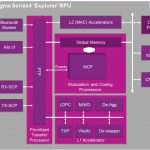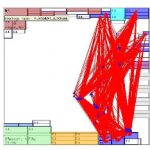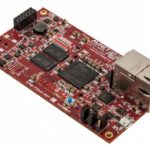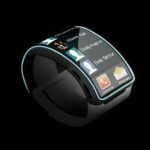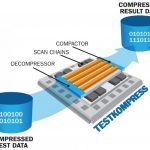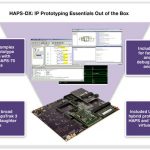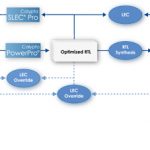We’ve become familiar with Imagination Technologies as a leading provider of IP for mobile GPUs, and within the last year the acquisition of the MIPS architecture has established them further in NPU and SoC circles. Their latest move targets an IP solution more in line with their heritage.
Imagination, way before becoming famous in every iPhone, was a digital radio company. With the UK home to the world’s largest digital radio network, much of that success was powered by the Pure family of digital audio broadcasting (DAB) receivers. Initially designed as a way to showcase Imagination digital radio chipsets, Pure took off as a consumer brand by breaking the £100 DAB receiver price point.
The timeline of the computer industry is proof history repeats itself. The smartphone and tablet have blossomed, with most now carrying Wi-Fi and Bluetooth as standard payload. Digital connectivity is moving into new application areas such as automotive, the Internet of Things, and wearables, with requirements for even smaller and more power efficient radio implementations.
There is no shortage of combination chipsets for Wi-Fi plus Bluetooth out there, well represented by the likes of Broadcom, Intel, Marvell, MediaTek, Qualcomm Atheros, Redpine Signals, and TI. Chipset solutions evolved because SoC makers were reluctant to place RF elements directly on chip, for several reasons. Historically, RF solutions have been finicky, resisting attempts by mere digital design mortals to integrate – but that resistance is diminishing as solutions improve.
More importantly, RF solutions have posed a thorny business problem. Adding a diverse set of multiple radios drives bill-of-material costs hard, and including unnecessary features in devices targeting low price points is a losing proposition. The standards themselves have been a moving target, with state of the art today being 802.11ac for Wi-Fi, and Bluetooth 4.0 including Low Energy technology. Also, varying regulatory and carrier requirements in worldwide markets have made integration challenging, driving many device vendors to prefer RF chipsets external to the mobile SoC so solutions can be tailored.
This RF churn may finally be settling out, as 802.11ac and Bluetooth 4.0 are becoming checklist items no device vendor wants to be without. There is another checklist item for automotive makers: FM radio, still alive and well everywhere in the world. FM radio also fits well with wearables, offering users the option of over-the-air broadcasts or Internet radio capability.
On that backdrop, the battle may be shifting to a more integrated, lower power SoC design with combination RF capability built in. Imagination is well poised to fill this role, combining their RF heritage with deep experience in lower power SoC IP. This is the motivation for the new Ensigma Series4 radio processor unit (RPU), an IP core with a combination of Wi-Fi, Bluetooth, and FM radio receiver.
Combining physical interfaces is one thing, but significant attention needs to be paid to blending traffic under real-world use scenarios such as audio streaming. The Ensigma Series4 carries advanced coexistence algorithms with features like Bluetooth cycle prediction, packet prioritization supporting QoS, and optimized use of unified memory. If effective, this could mean significant improvements in power and performance compared to external chipsets.
The Ensigma Series4 is also configurable, so baseband solutions can be customized by the OEM where that need exists. For more on the Ensigma Series4 architecture, visit the Imagination blog:
Ensigma combo IP delivers Wi-Fi, Bluetooth, and FM connectivity
Will Imagination succeed with RPU IP? Combo RF chipset vendors have so far feared to tread on this ground, but with the experience earned in trailblazing digital radio markets and delivering power-efficient IP for mobile solutions, an Imagination RPU solution is certainly plausible for a new generation of tiny wearable devices. The addition of an FM receiver – which presumably could be configured for other over-the-air standards like HD Radio or DAB+ – adds some extra intrigue, especially for automotive OEMs.
What do you think of the markets and this approach?
lang: en_US


